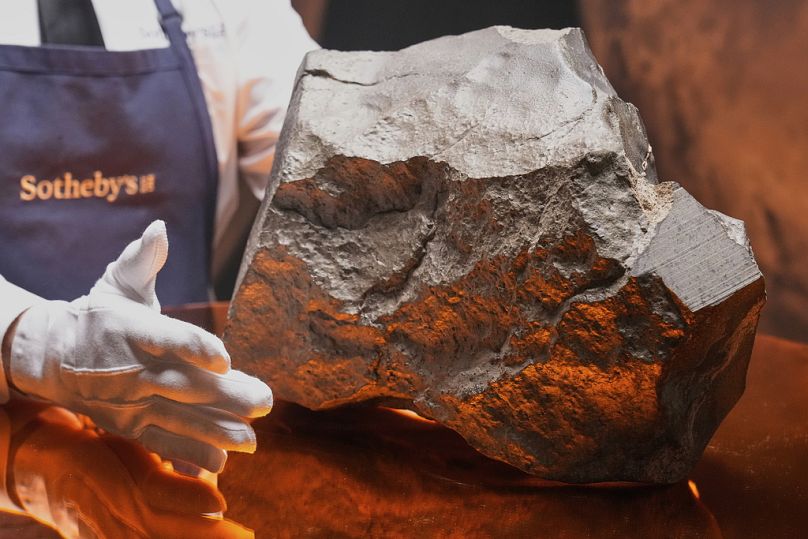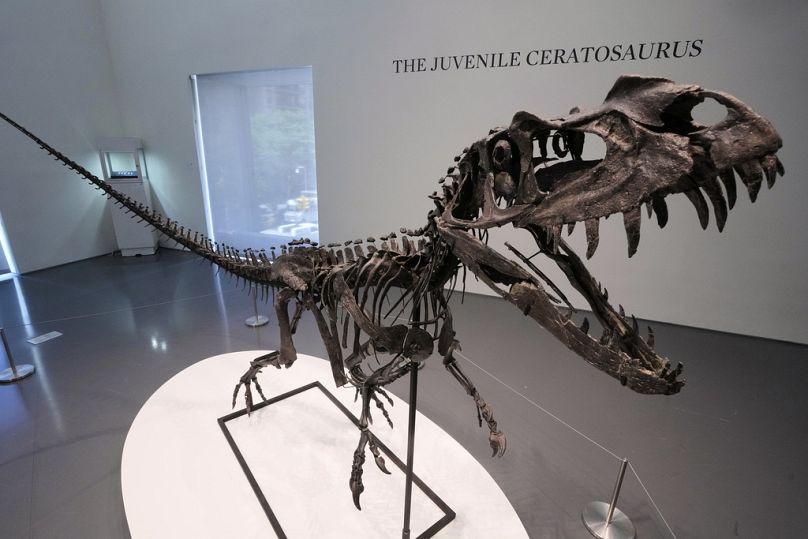A 25-kilogram rock is being auctioned off at Sotheby’s New York on Wednesday. It’s being listed for a price of $2 million (€1.71 million) to $4 million (€3.42 million).
Why so expensive?
Well, it's not just any rock. It's the largest piece of Mars ever found on Earth.
The Martian rock, known as NWA 16788, will be sold as part of a natural history-themed sale that also includes a juvenile Ceratosaurus dinosaur skeleton that's more than 2 metres tall and nearly 3 metres long.
According to the auction house, the meteorite is believed to have been blown off the surface of Mars by a massive asteroid strike before traveling 225 million kilometres to Earth, where it crashed into Africa's Sahara Desert.
A meteorite hunter found it in the remote Agadez Region of Niger in November 2023, Sotheby's says.
The reddish-brown hunk is about 70% larger than the next largest piece of Mars found on Earth and represents nearly 7% of all the Martian material currently on this planet, Sotheby's says, measuring in at nearly 375 millimetres in length, 279 millimetres in width and 152 millimetres in height.

“This Martian meteorite is the largest piece of Mars we have ever found by a long shot," said Cassandra Hatton, vice chairman for science and natural history at Sotheby's. “So it’s more than double the size of what we previously thought was the largest piece of Mars.”
The rock is a super a rare find. There are only 400 Martian meteorites out of the more than 77,000 officially recognised meteorites found on Earth, Sotheby's says. Hatton asserted that a small piece of it was removed to study it and confirm that it is indeed Martian.
The study found that it is an “olivine-micro gabbroic shergottite,” formed from the slow cooling of Martian magma. It has a course-grained texture composed primarily of pyroxene, Maskelynite, and olivine, Sotheby's says.
It also has a glassy surface, likely due to the high heat that burned it when it fell through Earth's atmosphere, Hatton said. “So that was their first clue that this wasn't just some big rock on the ground,” she said.
It's not clear exactly when the meteoroid hit Earth, but testing shows it probably happened in recent years, Sotheby's said.

Also on auction is the juvenile Ceratosaurus skeleton, which was found in 1996 near Laramie, Wyoming in the United States at Bone Cabin Quarry – a gold mine for dinosaur bones.
Specialists assembled nearly 140 fossil bones with some sculpted materials to recreate the skeleton and mounted it so it's ready to exhibit.
The skeleton is believed to be from the late Jurassic period, about 150 million years ago, Sotheby's says. It's auction estimate is anywhere between $4 million (€3.42 million) to $6 million (€5.13 million).
It’s unclear if the items will actually sell at these prices, as such items have never been sold at auction before. Sotheby’s says whoever ends up purchasing the incredibly rare items is guaranteed to snag a one of a kind piece of history.







